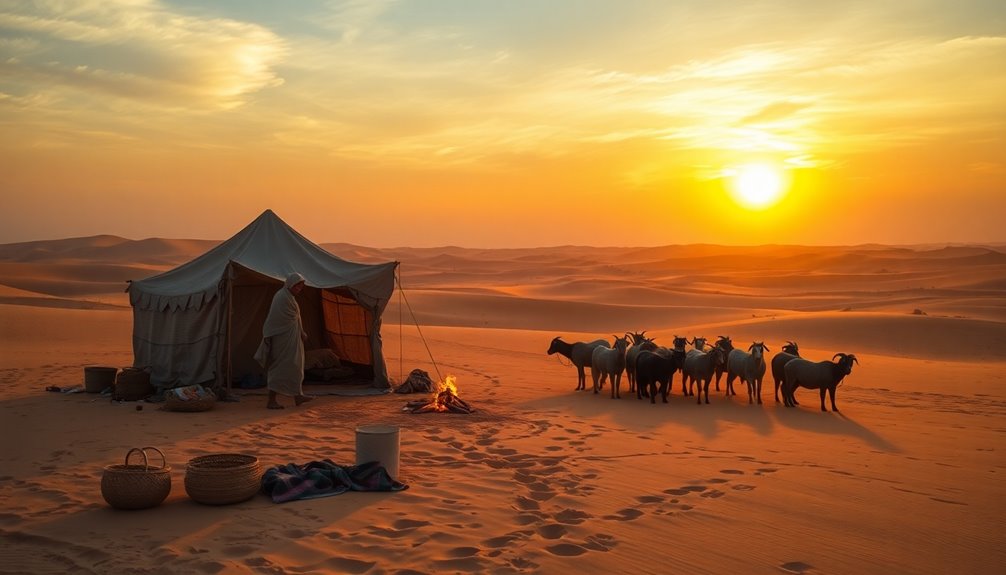A nomadic lifestyle means regularly moving without a permanent home, often in search of resources like food and water. This way of life adapts to seasonal changes and diverse environments, allowing people to establish travel patterns. You'll come across various nomadic groups, like Mongolic pastoralists and the Maasai in East Africa, each with its unique practices. Embracing this lifestyle has its challenges and rewards, and there's much more to discover about its impact and benefits.
Key Takeaways
- A nomadic lifestyle involves regular movement without a permanent home, often in search of resources like food and water.
- Nomadic groups typically raise livestock, following seasonal patterns to find pastures and adapt to diverse landscapes.
- Key characteristics include minimal possessions, strong kinship ties, and established travel routes based on environmental changes.
- Historical origins date back to ancient times, influencing trade and cultures across regions from India to Europe.
- Modern nomadic groups face challenges like financial insecurity, limited possessions, and disruptions to social connections due to their transient existence.
Definition of Nomadic Lifestyle
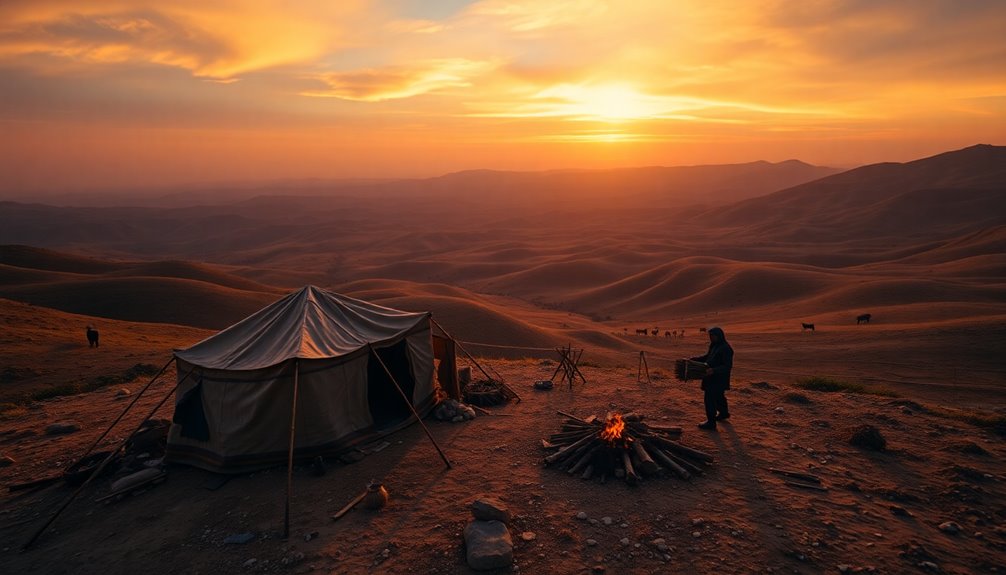
A nomadic lifestyle is characterized by the regular movement of individuals or communities from one place to another without a permanent home.
In this nomadic life, people often engage in nomadic pastoralism, raising livestock while following seasonal patterns to find food and water.
You'll notice that nomadic tribes adapt to their environments, allowing them to thrive in diverse landscapes. They move from place to place, driven by the need for resources, ensuring their survival and cultural practices endure.
This way of life has persisted through history, with an estimated 30–40 million nomads still living today.
Their resilience highlights the importance of maintaining a connection to the land while embracing the freedom that comes with a transient existence.
Historical Origins of Nomadic Cultures
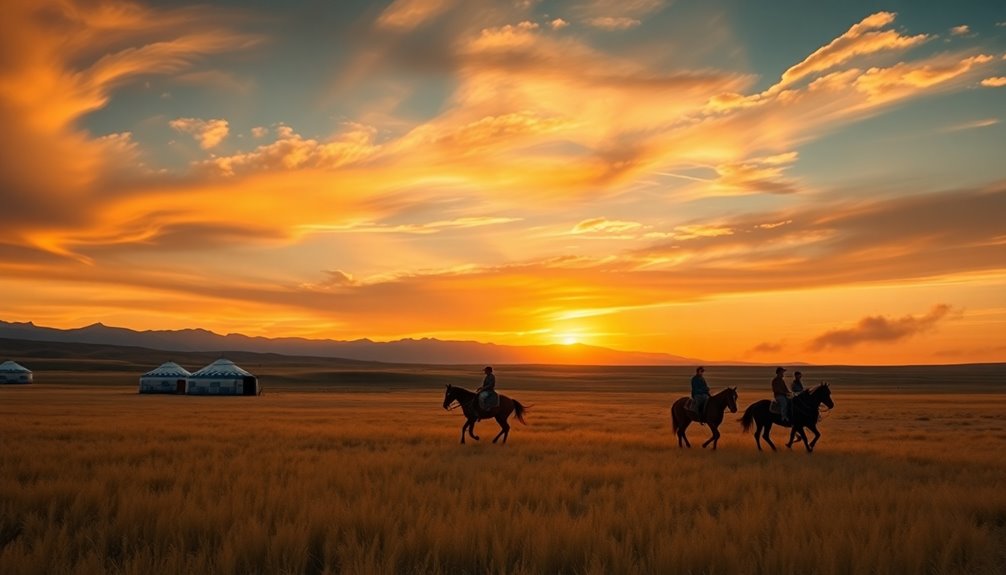
While many cultures have roots in settled agriculture, nomadic lifestyles trace their origins back to ancient times when communities sought resources essential for survival. The nomadic life began in India, moving across Asia to Europe, primarily driven by the quest for food and water for livestock. Early nomadic groups, like the Mongolian and Turkic nomads, thrived through hunting, gathering, and herding.
| Period | Region |
|---|---|
| 8,500 – 6,500 BCE | Southern Levant |
| Ancient Nomadic Societies | Central Asia |
| Mongolian Empires | Asia and Europe |
| Techno-Complexes | Circum-Arabian |
| Indo-European Migrations | Various Regions |
Historical nomads greatly influenced civilizations, trading and sometimes raiding, shaping the world as we understand it today.
Common Characteristics of Nomadic Life
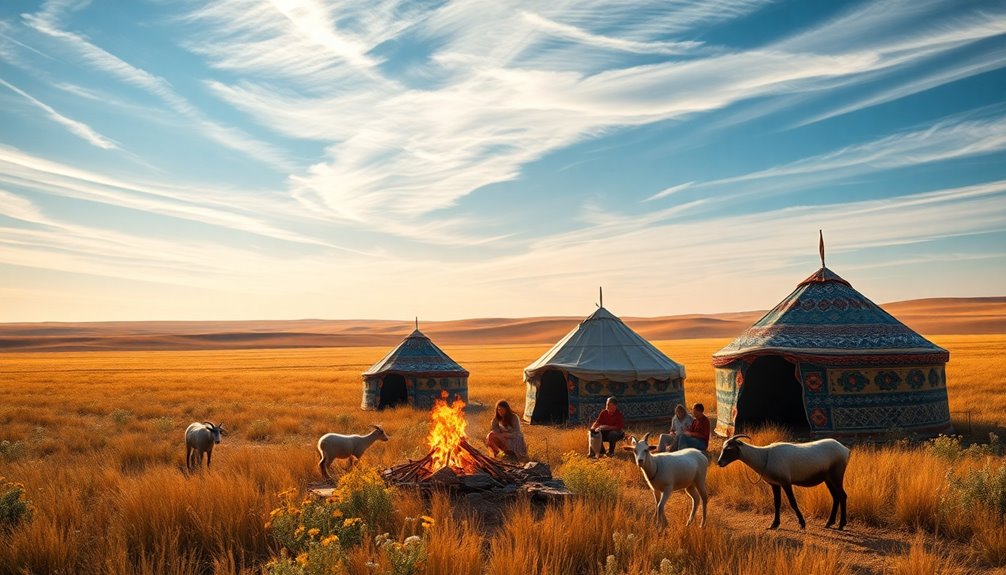
Nomadic life has several defining characteristics that set it apart from settled lifestyles. You'll find that individuals or groups often move from place to place in search of pastures and resources like food and water.
Nomadic herders typically follow established travel patterns, which are usually seasonal or annual, adapting their routes based on the environment. Unlike settled communities, nomadic lifestyles emphasize minimal possessions, focusing instead on herded animals.
Decisions are commonly made through kinship ties and cooperative agreements, often led by councils of adult males or chiefs. While traditional transportation methods include animals and canoes, modern nomads may use vehicles to enhance mobility.
Ultimately, the absence of a permanent home base allows for adaptability and resilience in varying conditions.
Types of Nomadic Groups
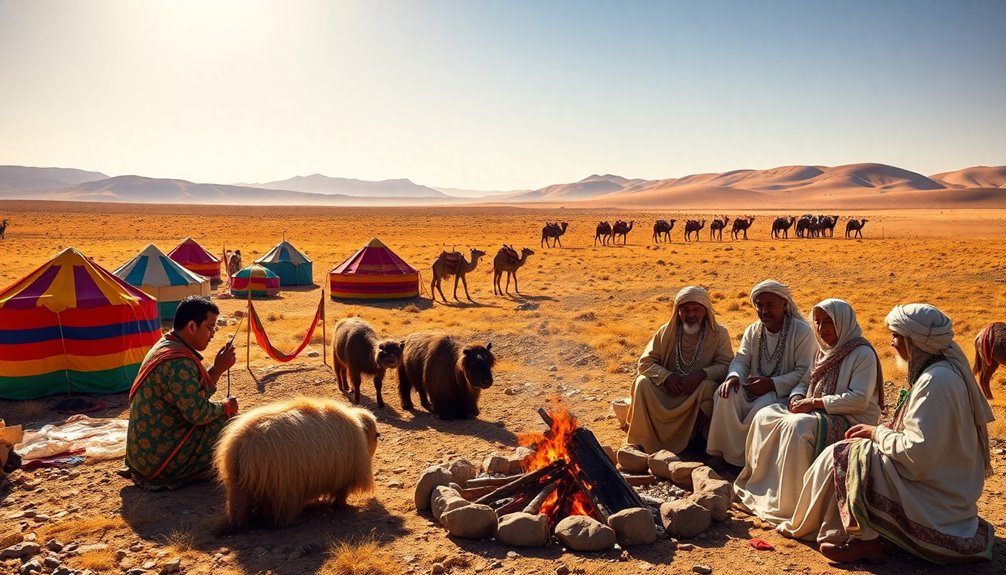
Many different types of nomadic groups exist, each with unique lifestyles and practices shaped by their environments.
For instance, nomadic pastoralists, like the Mongolic and Turkic peoples, move from place to place in search of pastures for their livestock. The Maasai in East Africa exemplify this nomadic way of life, following seasonal grazing patterns.
Meanwhile, the Gadia Lohar represent a unique blend of nomadic craftworkers and merchants, traveling to trade their goods.
Historical nomadic societies, such as the Plains Indians of the Great Plains, relied on migrating game animals like buffalo to sustain their communities.
Even contemporary nomadic groups, like the Bedouin, adapt their practices while preserving their cultural identity.
Each group illustrates the diversity of nomadic existence.
Modern-Day Nomads
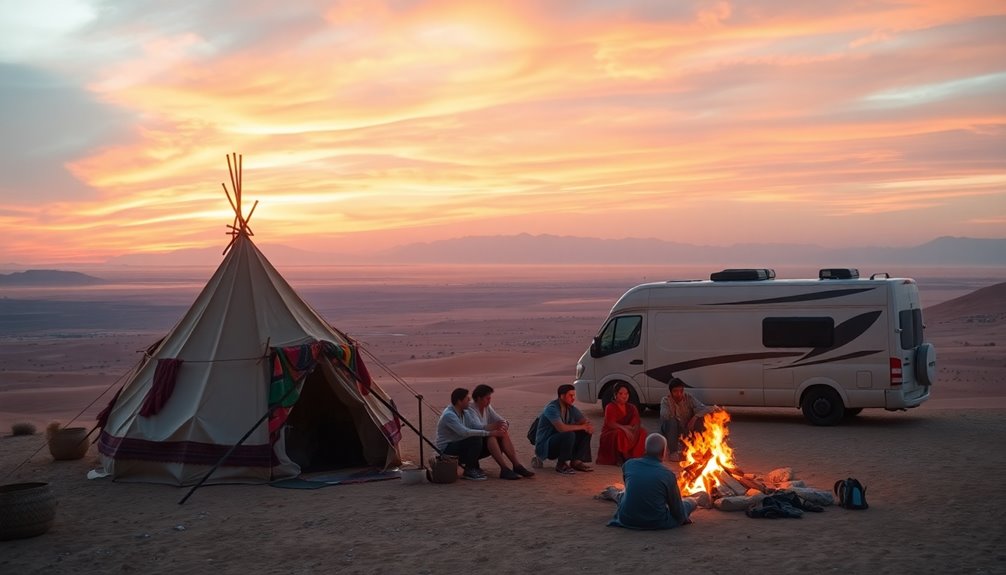
As modern society evolves, around 30–40 million people still embrace a nomadic lifestyle, engaging in seasonal migrations that blend traditional practices with contemporary challenges. Modern-day nomads, such as the Bedouins and Maasai, continue to move from place to place, relying on nomadic pastoral techniques for herding and foraging. In regions like Mongolia and Central Asia, these cultures adapt while revitalizing their identities.
| Group | Location | Practices |
|---|---|---|
| Bedouins | Middle East | Herding, Foraging |
| Maasai | East Africa | Livestock Raising |
| Kyrgyz Nomads | Central Asia | Cultural Revitalization |
This blend of traditional practices and modern technology fosters community connections, ensuring a resilient nomadic lifestyle.
Challenges of a Nomadic Lifestyle
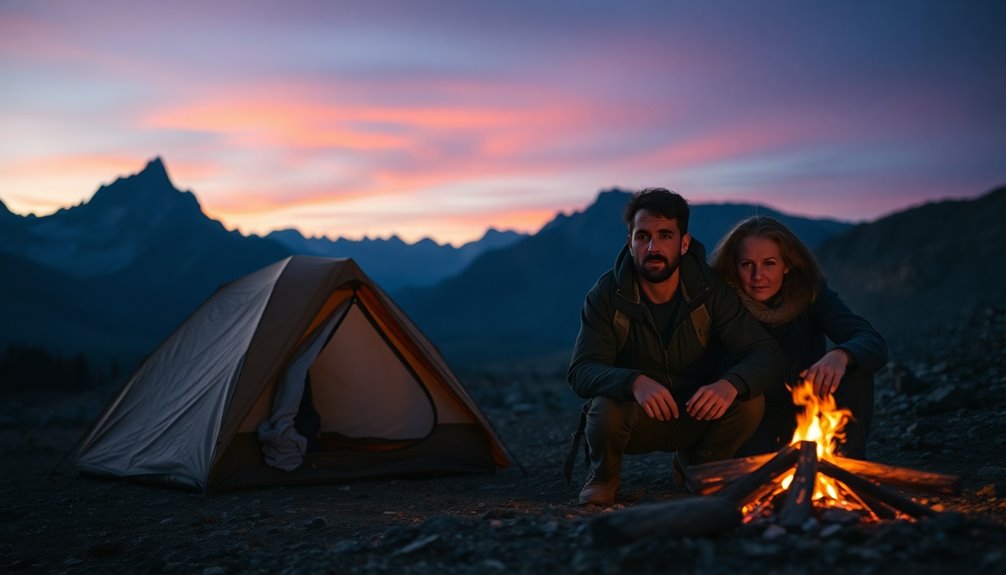
While embracing a nomadic lifestyle can be exhilarating, it also comes with significant challenges that can impact daily life. You may face:
- Financial Insecurity: Income can fluctuate, making budgeting and savings essential for stability.
- Minimal Possessions: Living with limited belongings can lead to frustration, as you adapt to life confined to a small space, like a 15kg backpack.
- Changing Environments: Constantly shifting locations can be mentally taxing, disrupting your work-life rhythm and making it hard to form lasting social connections.
These challenges can create a sense of instability, affecting both your personal relationships and your ability to feel rooted in any place.
Balancing these aspects is key to thriving in a nomadic lifestyle.
Perceptions of Nomadic Societies
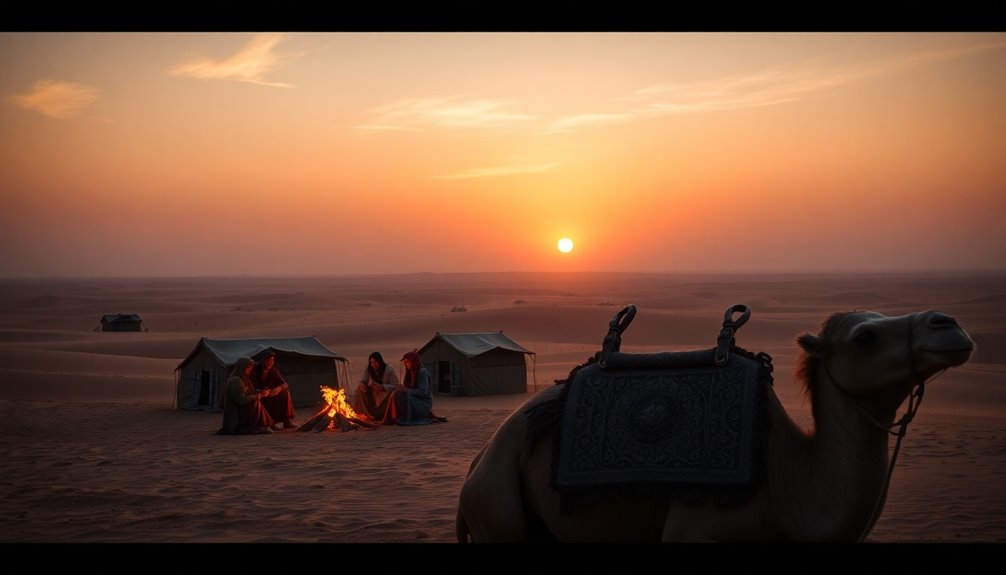
How do perceptions of nomadic societies shape our understanding of their way of life? Often, you might see these communities labeled as aimless or destructive, but that overlooks their sophisticated resource management and environmental stewardship.
Western literature has romanticized nomads, celebrating traits like independence while ignoring their complexities. Historically, some viewed them as civilizing forces, yet modern narratives often paint them as rootless or homeless.
These stereotypes stem from misunderstandings, leading to misrepresentation in media and academia that disregard their cultural richness and adaptability.
As urbanization increases and traditional nomadic lifestyles decline, perceptions continue to shift, complicating how global communities value these societies.
Understanding their true nature is essential for breaking down these misconceptions.
Benefits of Living a Nomadic Life
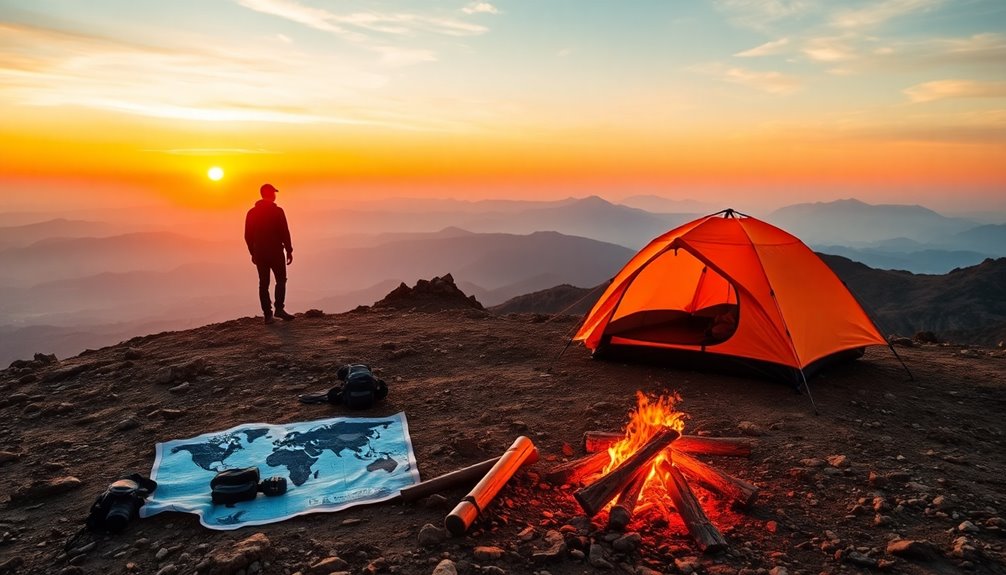
Perceptions of nomadic societies often miss the profound advantages of their way of life. Embracing a nomadic lifestyle offers you unparalleled freedom and unique experiences, enhancing personal growth through cultural exchanges with diverse communities.
Here are three key benefits:
- Minimalism: Living simply encourages you to prioritize experiences over material possessions, leading to greater satisfaction and happiness.
- Fulfillment: The flexibility of a nomadic life lets you adapt your activities to your passions, from hiking to volunteering, enriching your sense of adventure.
- Community: Despite constant movement, you'll form supportive connections with like-minded individuals, fostering a sense of belonging and camaraderie.
In this dynamic lifestyle, you'll discover that happiness often comes from the journey, not just the destination.
Frequently Asked Questions
What Is an Example of a Nomadic Lifestyle?
One example of a nomadic lifestyle is the way the Maasai people in Kenya and Tanzania move their cattle herds across the land.
You'll see them travel vast distances to find seasonal pastures and water sources, adapting to the environment's needs.
This lifestyle reflects their deep connection to nature and tradition, allowing them to thrive in a landscape that requires constant movement and flexibility to guarantee the well-being of their livestock and community.
What Makes a Person a Nomad?
To be considered a nomad, you regularly move from one location to another, avoiding a fixed, permanent home.
You follow seasonal patterns or specific routes, often driven by resources like food and water. Your lifestyle might involve traveling with livestock or trading goods.
You maintain strong social ties, working closely with a community that supports your way of life.
Fundamentally, you adapt your movements to the environment and the needs of your group.
What Is Meant by Nomadic Life?
Imagine a leaf dancing in the wind, never settling, always searching for sunlight.
That's what nomadic life means. It's about moving from place to place, often in pursuit of resources like food or water. You embrace change, adapting to new environments and experiences.
While your roots may be shallow, your connections to nature and community run deep. This lifestyle, rich in tradition and culture, allows you to discover the world in ways others might not.
Is a Nomadic Lifestyle Healthy?
A nomadic lifestyle can be both healthy and challenging.
You'll likely enjoy increased physical activity from exploring new places, which can boost your fitness and cardiovascular health. The excitement of constant change can enhance your mood, but it's essential to stay connected with others to avoid feelings of isolation.
Nutrition might be tricky, so plan meals carefully to maintain a balanced diet.
Conclusion
In embracing a nomadic lifestyle, you find freedom in the rustle of leaves and the whisper of the wind guiding your next adventure. Imagine waking up to a sunrise over distant mountains, your home shifting with each new horizon. The world unfolds like a map beneath your feet, filled with vibrant cultures waiting to be explored. While challenges may arise, the rewards of connection, discovery, and simplicity create a tapestry of experiences that enrich your journey.
